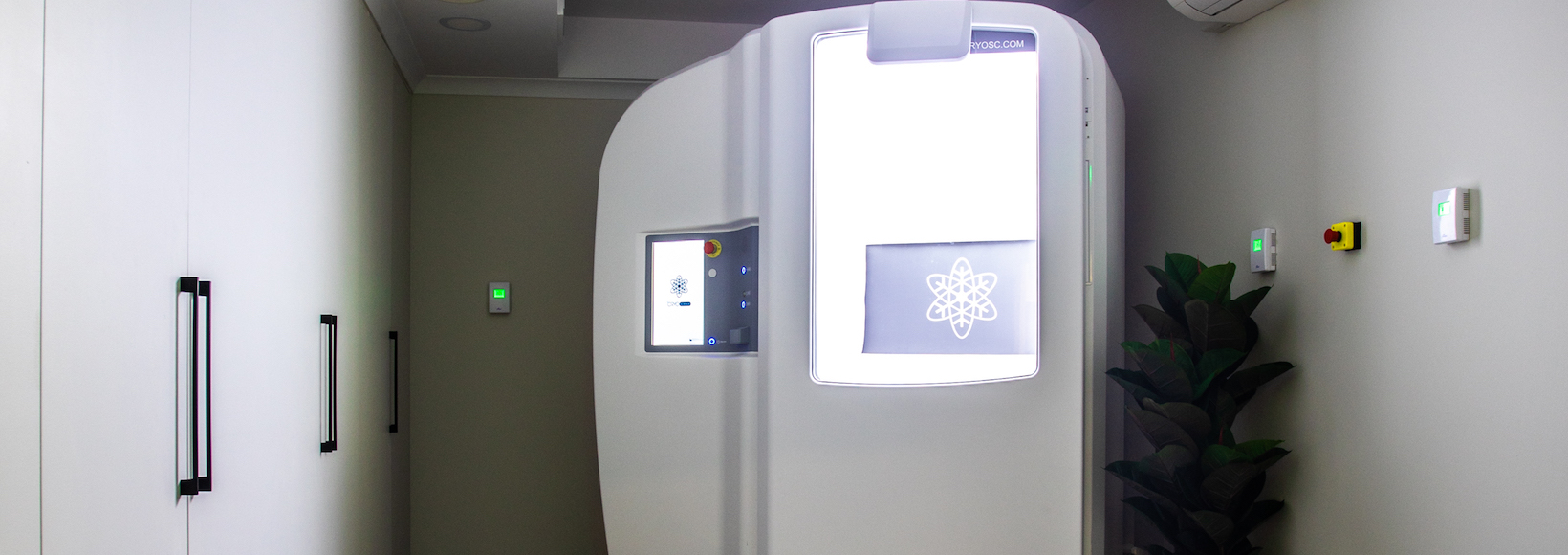
Whole-Body Cryotherapy FAQs
09/12/2020
What are Cryotherapy Chambers?
Whole-body cryotherapy occurs in special chambers. Cryochambers have strict control over the temperature and humidity. Participants are usually dressed to allow maximum exposure to the cold. Usually, participants must stay in the chamber no longer than 4 minutes at a temperature from – 85 to – 140 degrees Celsius.
In a whole-body cryochamber, there is no exposure to liquid nitrogen. Instead, the chamber is cooled either through electricity or liquid nitrogen. For liquid nitrogen whole-body cryochambers, the liquid nitrogen is pumped into pipes inside the walls of the chamber. This supercools the surrounding fresh air which is then pumped into the chamber. Hence, there is no exposure to liquid nitrogen.
What does cryotherapy do to you?
When you get into the cryochamber it causes your skin to cool. This activates the sympathetic nervous system. As a result, the blood vessels close to the surface of the skin narrow. This causes the blood flow to the peripheries and to injured or inflamed tissues in the body to slow. The decrease in blood flow slows down the metabolic processes in these areas. Hence, inflammation and swelling reduce.
Cryotherapy reduces cell death after exercise and slows down the speed at which our nerves conduct impulses. This leads to reduced tissue damage and pain sensation.
The narrowing of the blood vessels caused by cryotherapy leads to an increase in blood flow back to the core of the body. This stimulates a process in the body known as the “baroreflex.” The stimulation of the baroreflex by whole-body cryotherapy activates the parasympathetic nervous system. This is the part of the nervous system responsible for rest and recovery.
Cryotherapy also activates the “endogenous opioid system.” This is the system in the body that influences pain perception, sense of wellbeing and reward. This is thought to be the reason why cryotherapy can have a beneficial effect on depression, anxiety and an overall sense of wellbeing.
How cold is the cryochamber?
The whole-body cryochamber that we use can get down to temperatures as low as -140℃. However, most people will start off with temperatures approaching -110℃. There are several cryochambers in London that go down to temperatures of -85℃. However, most of the medical research into whole-body cryotherapy has been done at lower temperatures.
How long does the cryotherapy session last?
When you come to Coyne Medical for your Cryotherapy session we will first ensure that it is safe for you to get in the chamber. We will review your medical history and check your blood pressure. Then you will get changed into the appropriate personal-protective-clothing. Depending on your cryotherapy experience, you will be in the cryochamber for 2 and a half to four minutes. The whole process usually takes 20 minutes to half an hour.
What do I wear inside the cryochamber?
Inside the cryochamber, you will wear personal protective clothing that consists of a headband, face mask, gloves, long-socks, slippers and a sports bra for women.
Do I need to bring anything to my cryotherapy session?
No, you don’t need to bring anything with you unless you would feel more comfortable in your own clothing.
Is cryotherapy safe for everyone?
Whole-body cryotherapy is very safe but it is not suitable for everyone. Certain medical conditions prohibit the use of cryotherapy. These include:
Cryoglobinaemia – this is a medical condition whereby patients have a large number of cold-sensitive antibodies. These proteins become insoluble when the body temperature drops and clump together causing restricted blood flow.
Raynaud’s syndrome – a condition where blood flow to the extremities is unusually cold sensitive.
Claustrophobia – as although the window of the chamber can be open and the door can be pushed open easily the chamber is still a confined space.
Hypothyroidism – this condition increases sensitivity to cold temperatures.
Cardiovascular system disease – people unstable angina, peripheral vascular disease and cardiac failure would be unsuitable for whole body cryotherapy as it causes constriction of the peripheral blood vessels
Acute respiratory tract disease – these may be worsened by exposure to cold air and relative lack of humidity.
Severe wasting diseases – people with muscle wastage may not be able to tolerate cold temperatures.
Severe anaemia
Pregnancy
Seizure disorders
Wound healing problems
DVT – again this will have affected the peripheral blood vessels adversely so people who have had a DVT should not undergo cryotherapy.
Alcohol or drug use – both of these can adversely affect the normal physiological response to cold.
Can I still use the cryochamber with breast implants?
The whole-body cryochamber rapidly cools the skin. It is the rapid skin cooling that leads to the beneficial effects of cryotherapy. It does not affect your body tissues below the layer of the skin. Hence, it will not affect breast implants.
I have cancer, can I still get in the cryochamber?
The current recommendations advise that people with cancer or people who are in remission from cancer should not undergo whole-body cryotherapy. Once people are in remission from cancer for 5 years it is safe to undergo whole-body cryotherapy.
If you have any questions feel free to contact us.
Comments are closed.